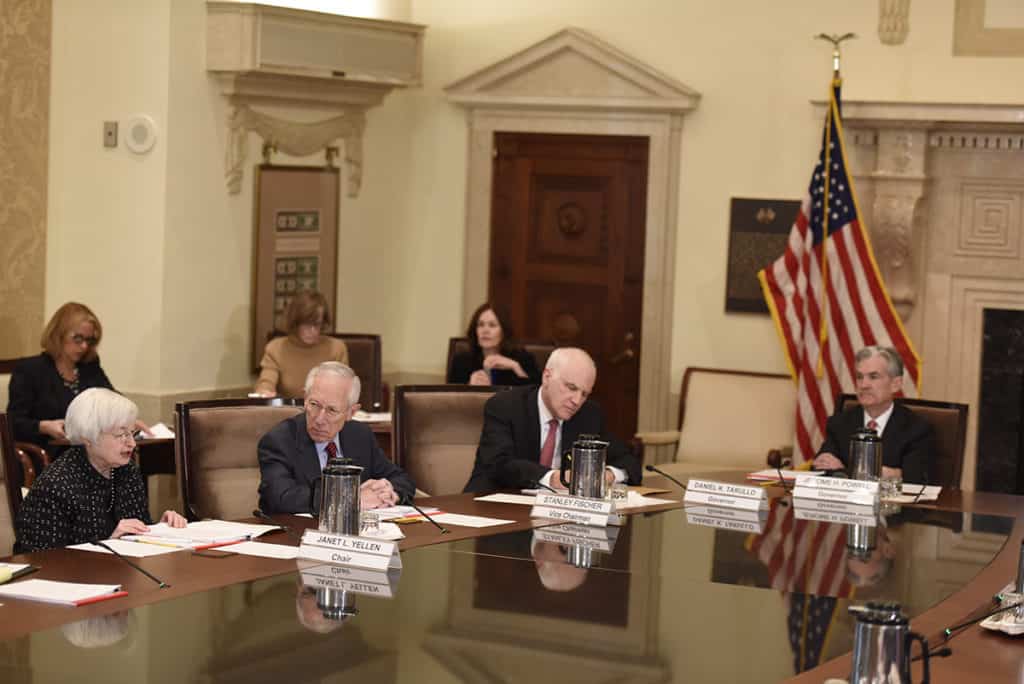The End is Near: Trump’s Economic Policy And The Inevitable Financial Crisis
By
Posted on
According to several top economists, the American economy is in jeopardy regardless of any actions Trump may take as president.

http://bit.ly/2kRR2Iu
Trump has always opposed Dodd-Frank Wall Street Reform and Consumer Protection. His recent steps to eliminate these conventions have met the criticism of some dominant central banks and proponents of Obama-brand security. Allegations are flying from all sides about the potential of a new economic meltdown.
According to Peter Schiff, CEO of Euro Pacific Capital and one of the few financial commentators to openly prophesize the 2008 economic crisis, a fresh crisis is coming “regardless of the actions Trump or Congress may take.” Other renowned economists including Martin Wolf of the Financial Times and Alan Greenspan, former chairman of the Federal Reserve, both agree that a crisis is “inevitable”.
Trump and his supporters argue that Dodd-Frank is holding back the economy, and blame economic instability on central banks, interest manipulation, and the national debt.
Indeed, everything points to the inherent flaws of Dodd-Frank and the depths of its failures to deliver upon its stated goals. In fact, Dodd Frank made very few meaningful regulations, with loopholes still persisting for derivative trading, credit-rating agencies and banks that play with FDIC insured money.
Banks smaller than the top five “too big to fail” have suffered the biggest blows. This is paradoxical considering that smaller banks were almost entirely uninvolved in activities related to the crisis, while larger ones suffered little and even ballooned in size, all thanks to Dodd-Frank.
Nevertheless, one of the reasons for the failure of Dodd-Frank is that it neglected to address the real cause of the last financial disaster: self-serving central bank policies. In its wake, central bankers blamed financial deregulation, or anything aside from their own policies, while the monetary policy of the Federal Reserve was the underlying cause.
The flood of “cheap” money caused by the repeated decrease of the federal funds rate, created liquidity on the market and generated a real estate bubble. Everything went along well for a while but eventually it burst, when the Fed decided to raise interest from 1% in June 2003 to 5.25% in June 2006, which dramatically changed the mortgages homeowners were paying.
Relevant economic figures and bankers knew that Federal policies would generate distorted information about prices, so although it seemed like banks were over-investing, they were just responding to the Fed’s false signals.
To date, no strides have been made in the prevention of another massive crisis. Bank manipulation has not been eradicated. What’s more, since 2008, the Fed has taken over the manipulation of the dollar and interest rates, keeping it at low rates, which allows “cheap” money to fuel markets.
A whole new economic crisis is yet to be unleashed and it will surely define Trump’s presidency. Now, Wall Street’s own Steve Mnuchin has been appointed Secretary of the Treasurer. It remains to be seen if the new administration will exert their forces by loosening banking regulations, allowing the Fed to inflate the bubble even more, or act swiftly with new regulations that increase interest rates.
This article (The End is Near: Trump’s Economic Policy And The Inevitable Financial Crisis) is free and open source. You have permission to republish this article under a Creative Commons license with attribution to the author and True Activist.
Advertisement
No comments:
Post a Comment